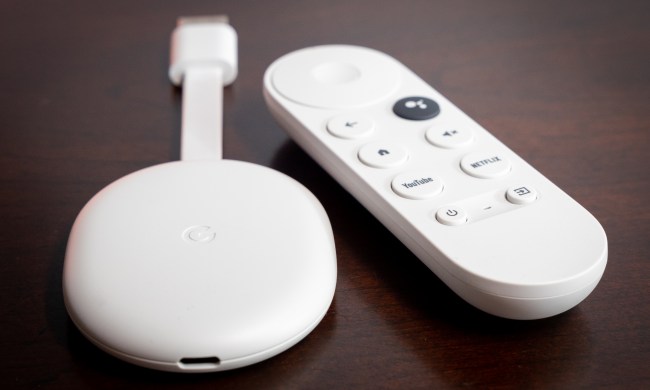

Announced today at Google I/O 2015, Android TV Channels will line up network TV channels like ABC and CBS alongside streaming apps from a variety of streaming video partners, including TED, Vevo, the Huffington Post, Bloomberg, AOL, Pluto, the Weather Network, and European streaming service Zattoo, allowing users to “surf” through broadcast TV and streaming content in one streamlined channel grid.
Once the apps are downloaded from Google Play to an Android TV device (which includes streaming boxes like the Nexus Player and NVidia’s new Shield, and smart TVs from Sony, Sharp, and Philips), they’ll line up right next to basic network fare. But convenient placement is just the start. Instead of requiring users to open each app and dig around for content, Google has partnered with the above clients to setup live streams of content that will already be playing as you fly by.
Under the new model, users will still be able to select content on demand from each app, but if you want to simply sit back and see what’s on, you’ll be able to cycle through the channels and apps to find whatever suits your fancy at the time. Variety reports that the streaming partners will also be able to control which ads will pop up during the live feeds.
Google has plans beyond those current partnerships, as well. Apart from airing, say, live weather coverage from the Weather Network, or breaking news from the Huffington Post, Variety reports users might be able to tailor the “channels” to play older on-demand programming in a loop, avoiding those dreaded moments of paralysis when you just can’t decide what to watch.
Android TV product manager Allen Huang even brought up the possibility of building an entire channel around a single program set on a 24 hour loop, allowing super fans of popular shows like Friends to simply check in while channel surfing and see what antics Ross and Rachel are up to, as opposed to firing up a streaming app and selecting a specific episode.
Deja Vu
This is not the first time we’ve seen a company attempt to meld streaming apps with live TV, however. Digital antenna maker Mohu cooked up a strikingly similar project called (interestingly enough) Mohu Channels, which premiered earlier this year running an Android-based operating system. However, Mohu’s version is clunky and tough to love. And, of course, the company can’t pull the same strings as a tech giant like Google, forcing users to open each app individually for an experience only marginally different than seeking them out from a more traditional streaming setup.
Still, while this new tack for Android TV is admitedly intriguing, one has to wonder if it’s a solution looking for a problem. While some apps might be conveniently poised for channel surfing, others are not. Netflix, for instance, is designed entirely around the on-demand model — and with 62 million subscribers and counting, there doesn’t seem to be a whole lot of objection to its current means of content delivery. Netflix users who want 24 hours of Friends are welcome to set that fire by simply selecting it within the app, with only marginal inconvenience.
Further, Android TV Channels doesn’t work with DVRs for cable or satellite services, which makes its functionality extremely limited at present. Essentially, the service appears to be aimed primarily at cord cutters, who have all but given up the bonds of traditional TV. And for those already neck deep in the streaming age, how important is it that streaming apps be set-up like a traditional channel grid, anyway? Even diehard cable subscribers aren’t surfing as often as before thanks to the time-shifting afforded by DVRs, allowing users to watch on their own schedule — and fast-forward through commercials.
As the entertainment landscape continues to shift at a breakneck pace, there will be plenty of room for innovation, no doubt. The models we currently employ to view both traditional live programming, and on-demand content from Netflix, Amazon, and others, will continue to evolve in the near future, adopting new and more convenient ways to explore the oceans of content out there.
But reverting back to the old days of channel surfing seems like less of an innovation, and more of an homage to the old ways, back when the closest thing we had to on-demand content was taping the big game on your VCR. While we applaud Android TV’s creative efforts, it appears to be moving backward.
That is to say, rather than attempting to make on-demand content better fit into the viewing habits of yesterday, perhaps Google should instead focus on making traditional live TV work better with the viewing habits of today, and the devices of tomorrow.


